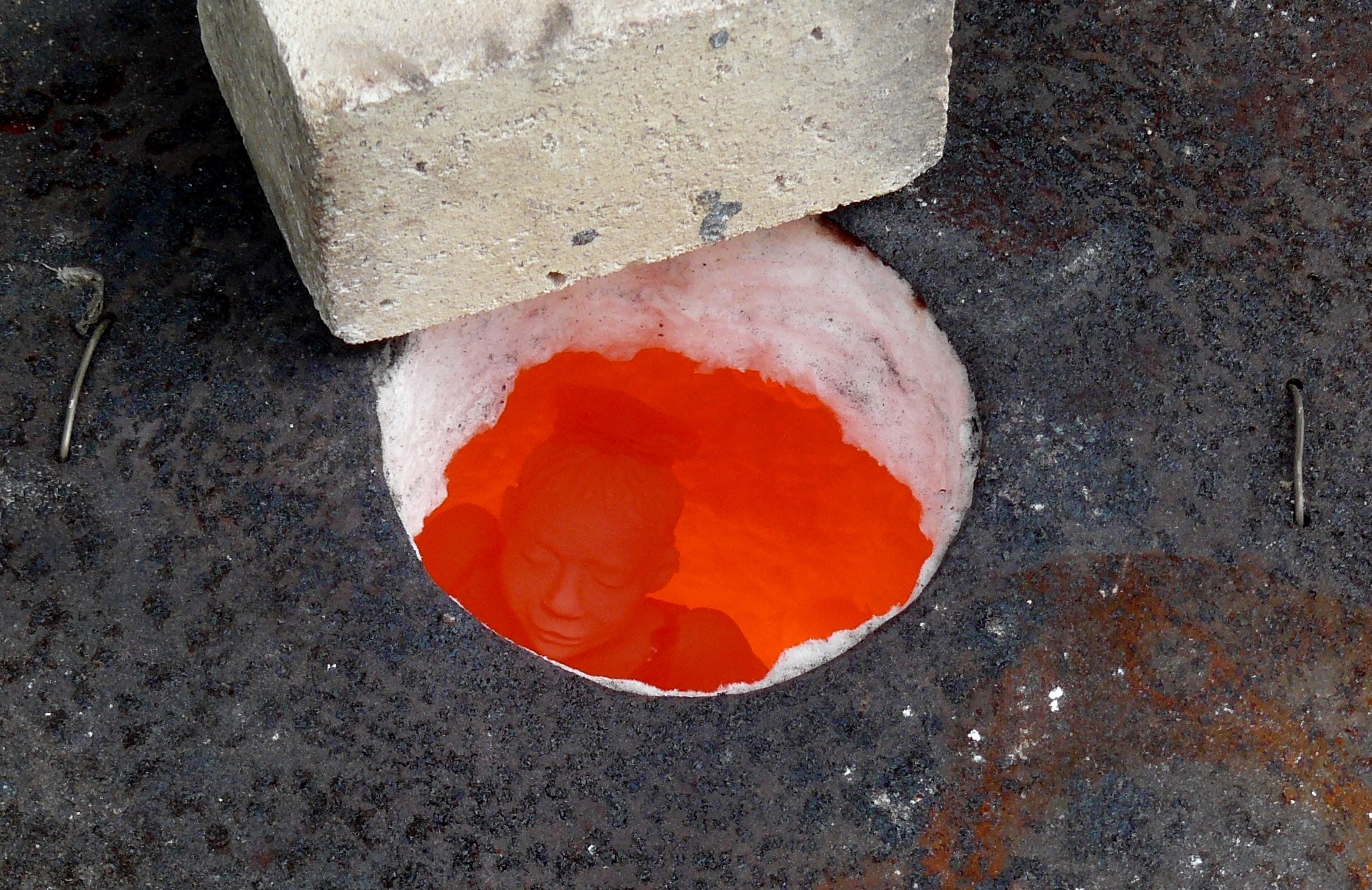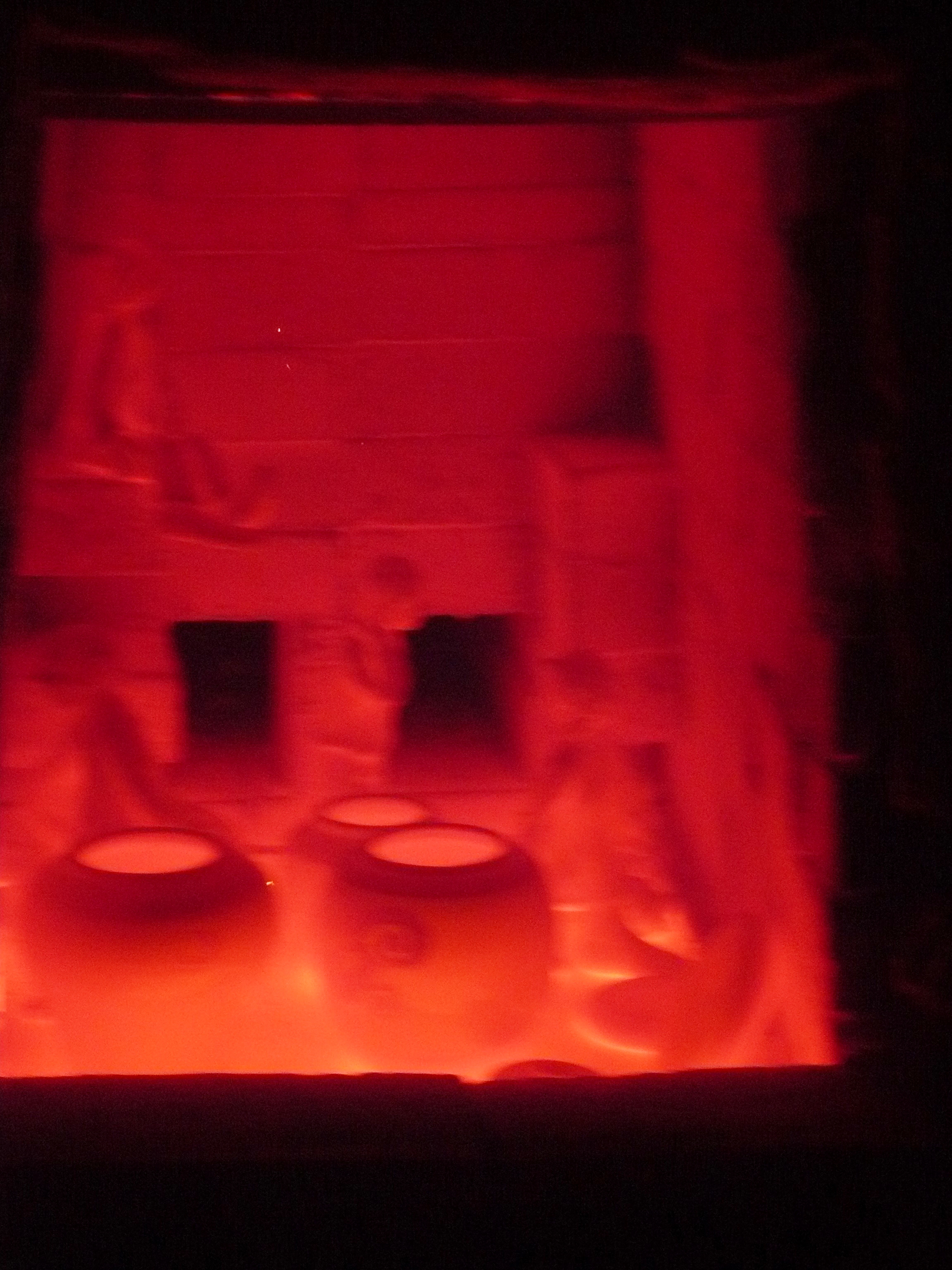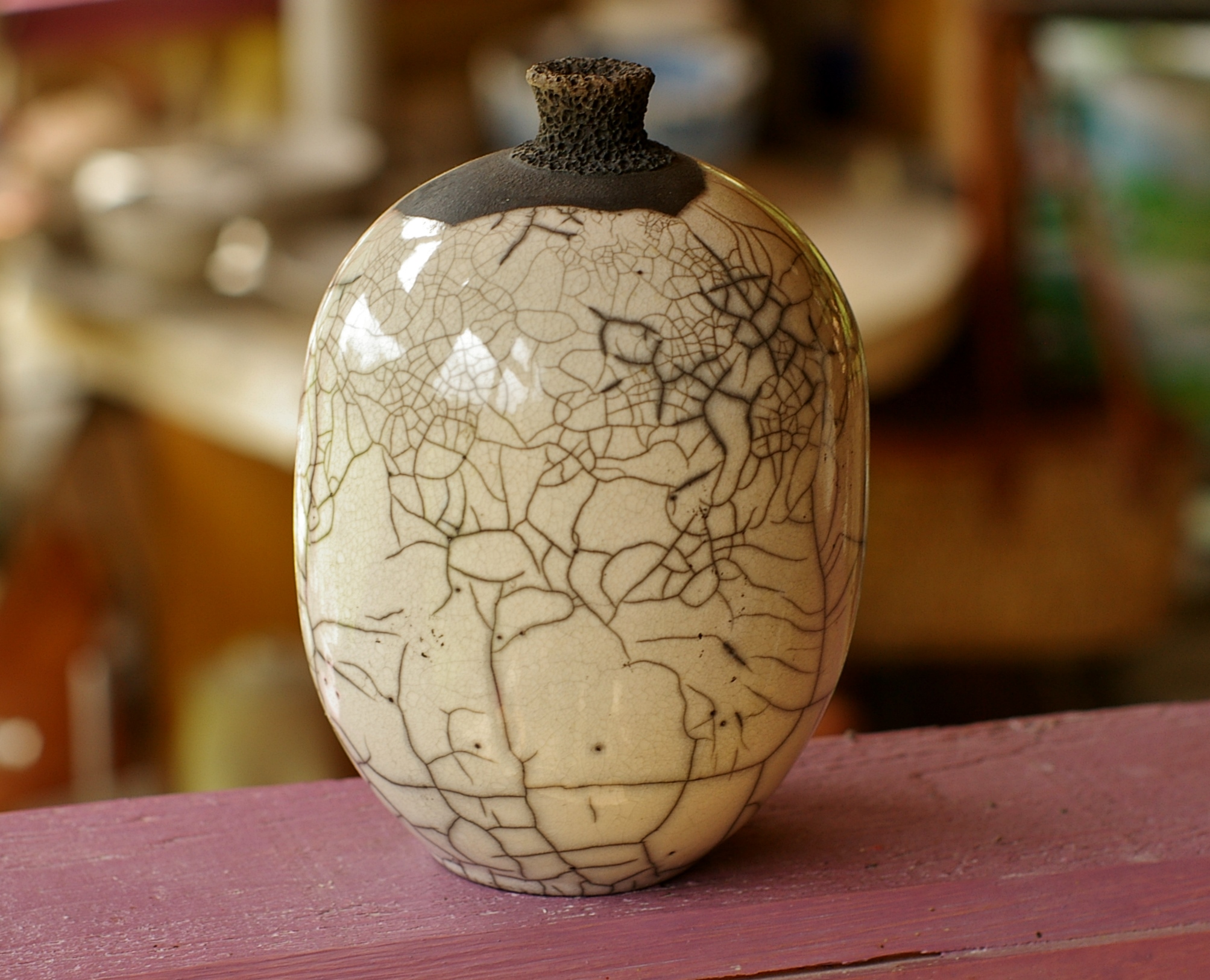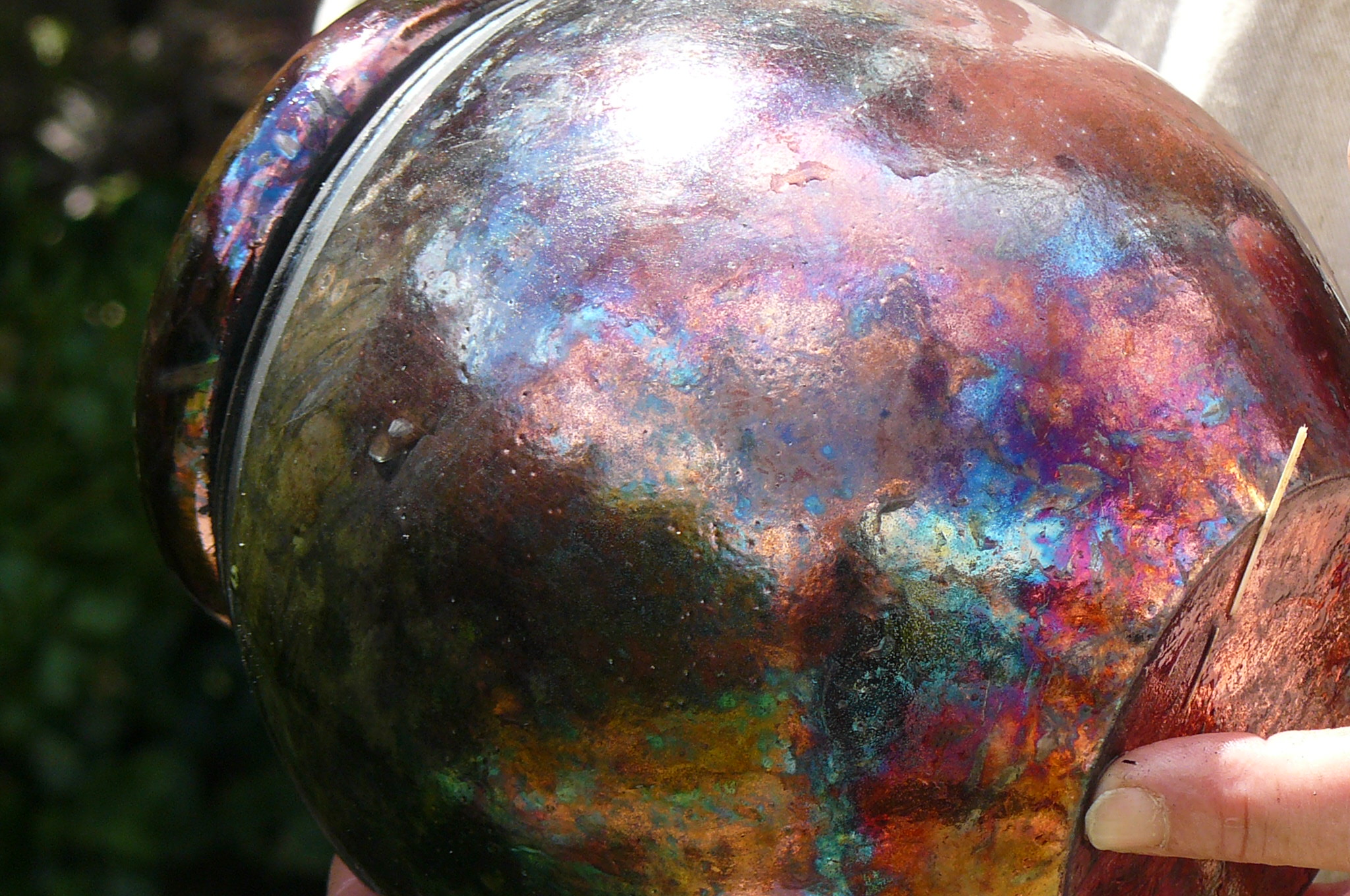Raku, a technique
I started throwing pots in 1994 on a big potter’s wheel, that was handmade, not very practical, but silent. Learning without any real training, with just a book and the advice of potters, (thank you Pierre) is long and tedious. You feel incapable and annoyed, but one day, you understand; and from time to time, it ends up working. Small, timid pots, the clay that does not rise very high but rises never the less, bases too thick … Little by little, the clay rises better. It took me 3 years to throw properly and feel the magic of the movements. I must say that now, it’s exciting, fun.
In 1998, with the help of a few friends, I made a brick-and-daubed inverted flame oven for the raku technique. This kiln works with wood. Until then, I fired my pieces in an electric kiln, bought second-hand from a cultural center, and so my first production was thrown and hand decorated earthenware. A potter friend, Jacquy Chaigneau, showed me the basis of this technique, but then, I was bored and I felt the need to explore other horizons.
Firing the clay !
Raku is a fast firing technique. Let me explain: the pieces are first thrown, dried and fired at about 1000 °C; this is to fire the clay. Then comes the enamel. That is, after glazing and drying the pottery, you fire the object or objects in the kiln and raise the temperature quite quickly engulfing wood in the “alandier”. At around 1000 °C, the kiln door is opened and, of course, with tongs and gloves, the incandescent pieces are taken out and plunged into a bath of sawdust, shavings or newspapers, straw … which has the effect of 1) energizing the enamel, 2) smoking and carbonizing the unglazed parts. Over time I have learned to make my own enamels.
To finish off, you scrub the object that is covered with carbon and rinse with water. It is at this moment that you find out if the piece is successful or a failure. If you get an emotion or if nothing happens.
Depending on the composition of the enamel, the crazing effect will be different, but it also depends on the temperature of the kiln, the speed of heating, the removal from the kiln, the woods used for the carbonization.
Repaired several times over the years, this outdoor oven, which has overcome not only high temperatures but also the rain and frost, still works.




